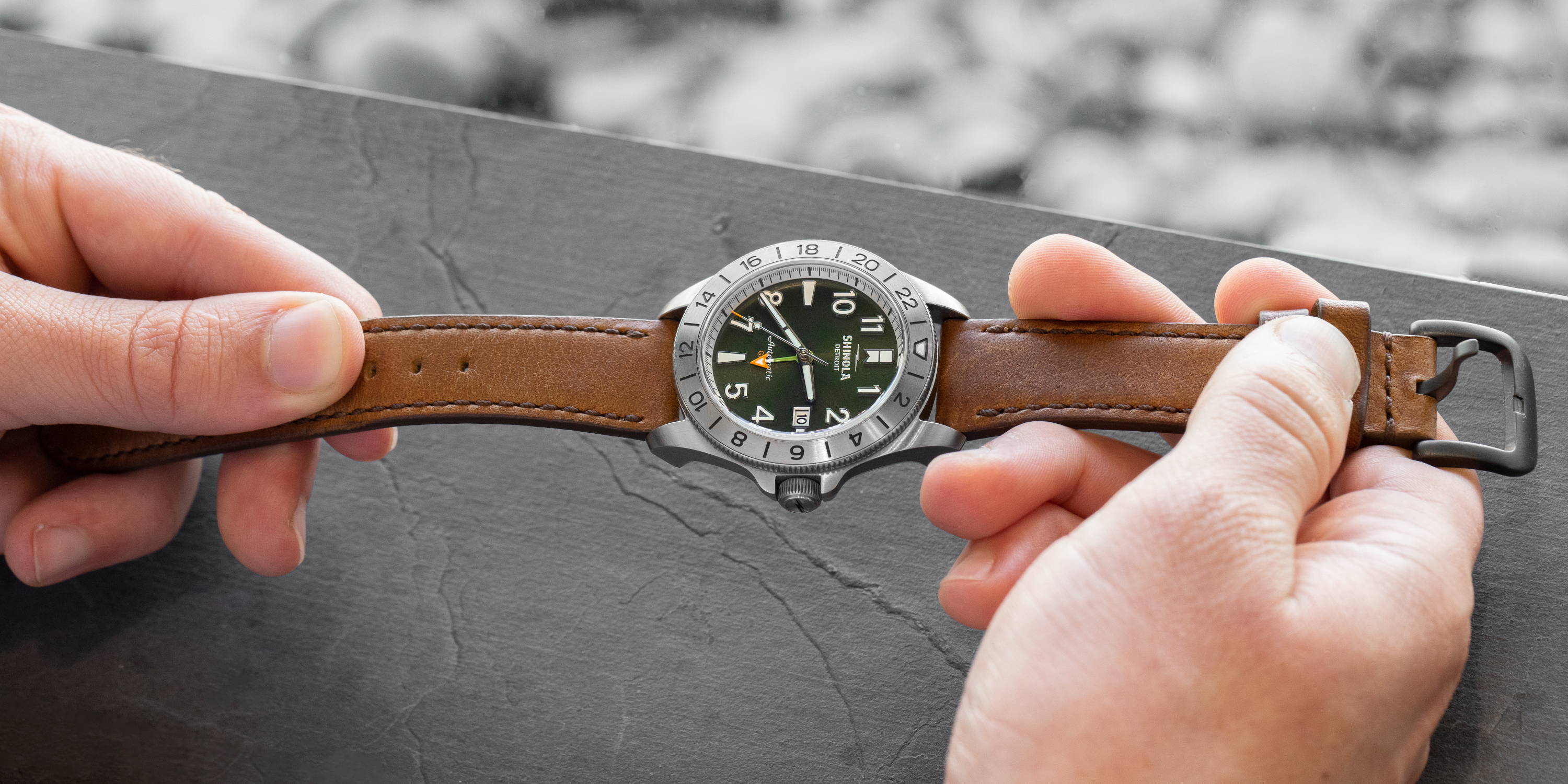
Strapped In: All About Watch Straps
A good wristwatch is a staple in any wardrobe. Whether you’re a collector, or an enthusiast who amasses scores of watches, or maybe just a one-watch-fits-all kind of person, there’s no doubting that a watch strap canmake a statement. Maybe a rubber strap goes on your watch for a morning at the gym, swapped for leather at work, and finally a polished metal bracelet for date night. Swapping out watch straps can change the entire look of your accessory and thankfully, it’s never been easier to do it yourself.
When Pocket Watches Became Wristwatches
How Can I Change my Own Watch Strap?
What are the Most Common Watch Straps?
Leather Straps
Leather is the tried-and-true, the classic, the paradigm of watch straps. It was the first material used in the production of wristwatches and its comfort and style versatility make it a popular choice for watch straps. Most after-market leather straps are easy to swap on and off, freshening up your timepiece so it looks almost like a new watch. The downside to leather is that it cannot get wet, so leave that watch at home if the weather looks rainy or you’re going to the beach.
Metal Bracelets
Perhaps the highest-end strap choice is the metal bracelet. Bracelets are most commonly made from stainless steel, but can also be precious metals, like 18K gold. Standard watch bracelets consist of individual links that can be removed or added to fit the wearer’s wrist, but many also feature a micro-adjustment functionality on the clasp or in between links to ensure an even tighter fit. Because of the material, metal bracelets can be a versatile strap style, as they can easily transition from land to sea, dress to casual, or day to night.
Rubber Straps
If you’re looking for something more flexible or sporty, a rubber strap is the way to go. Its durability makes it perfect for sport watches of all kinds. Rubber straps tend to be more casual and affordably priced. With a rubber watch strap, you always know what you’re going to get.
NATO Straps
The NATO watch strap is made of woven nylon, making it a versatile and easy-wearing material. Originally created in 1973 to meet standards and requirements established by the British Ministry of Defense for watches worn while in service, NATO straps gained popularity due to their practical use on the battlefield. They gave soldiers the ability to signal their regiment colors, giving rise to the colorful striped straps that are popular today. NATO straps require no additional tools to take on and off, as they loop easily under the watch case and through the spring bar. Its quick-drying nature makes it good for any outdoor or athletic wear. After the rise in popularity of the NATO strap in the 1970s, more watch and strap manufacturers have made their straps easier to swap on and off in response.
Whether you desire versatility, want to make a bold statement, or anything in between, it’s never been easier to customize your watch exactly to your liking. A quick-release watch strap is an easy and convenient accessory that gives the wearer the ability to transform their entire piece with the click of a button.